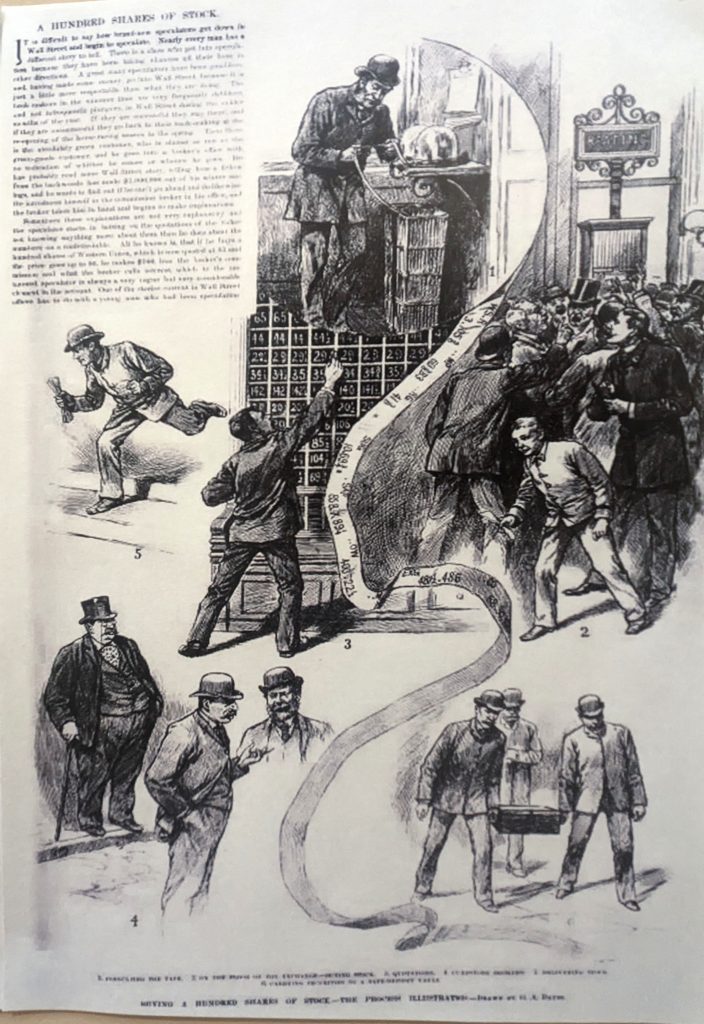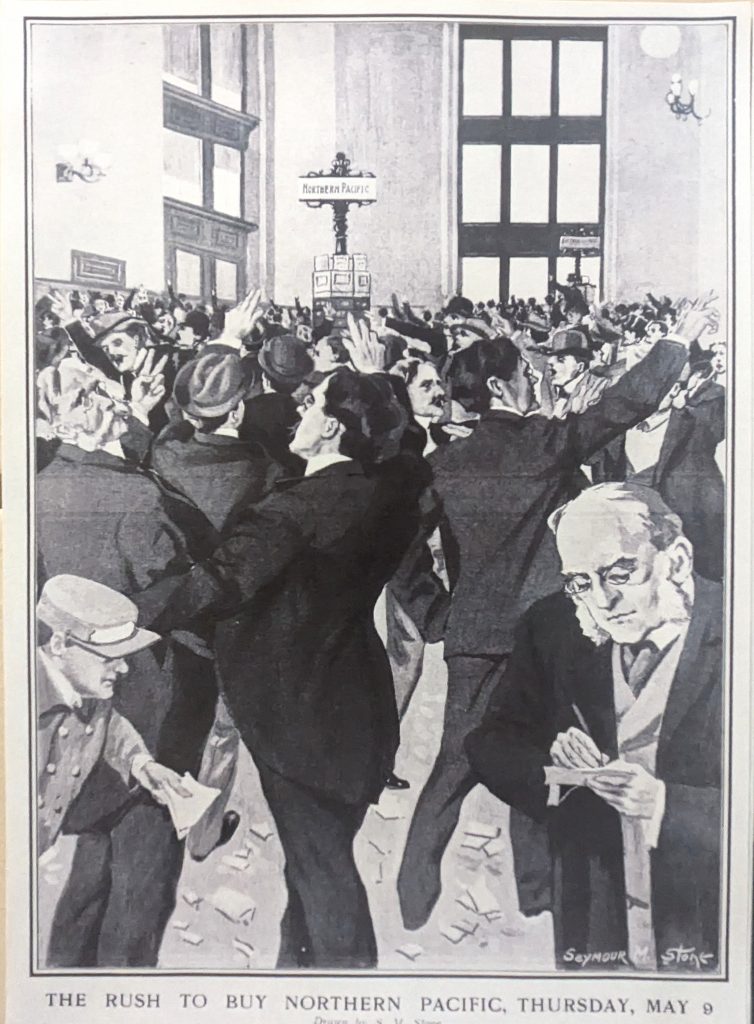Another fun fact about James J. Hill that we learned from our visit to the James J. Hill House is the role Hill played in the biggest “short squeeze” in the twentieth century. Hill, with the backing of J.P. Morgan, began acquiring shares of Chicago, Burlington & Quincy Railroad (the “Burlington”) in 1901 with a plan to combine the company with the Northern Pacific Railroad that they already owned.
But another tycoon, Edward Henry Harriman, had eyes on Burlington as well. When Burlington’s retiring owner chose Hill over Harriman, Harriman retaliated by rapidly (and secretly) buying up nearly enough shares in Morgan and Hill’s railroad, Northern Pacific. Harriman would have gained control, but his final order for 40,000 shares, enough to tip the balance of control of the railroad, was not filled, and Morgan, on vacation in France, finally cabled Hill to buy enough shares to secure their control.
In the mean time, all of this buying activity began to drive up the share price, from $110 to $130, drawing the attention of traders who saw the increase as illogical and began shorting the stock, in effect borrowing shares at the current price on a bet that the price would soon go down, at which point they would buy shares at the (hopefully) lower price to replace the borrowed shares. (If you borrow shares at $130 and the price falls to $100, you make $30 a share less a relatively small cost to borrow the shares.)
But Hill and Morgan’s buying spree drove shares still higher, to $150 and then to $200 a share, and the short sellers were now in a tough position. Instead of expecting to earn, say, $30 a share from a short position initiated at $130, they were now on the hook to lose $70 a share buying back shares at $200.


Since the float (the publicly available shares) of the Northern Pacific stock was rapidly shrinking as more and more short sellers needed to buy shares, the price of the few shares available rose to as much as $1,000 a share. This was enough to totally devastate many of the short sellers. On top of this, the margin loan interest rates that traders had to pay on the shares they had borrowed spiked to 60%.
Harriman, Hill, and Morgan realized that the entire stock market was threatened by the short squeeze that was underway, and arranged with the largest brokerage houses to suspend the delivery deadline and “generously” allow the short sellers to close their positions at just $160 a share–a huge discount to the $1,000 a share market price, but enough to deliver a lesson that the short sellers would not likely forget.
Hill and Morgan eventually combined the Northern Pacific Railway; the Great Northern Railway; and the Chicago, Burlington and Quincy Railroad (along with some other associated lines) into the Northern Securities Company in 1901, capitalized at $400 million (roughly $14.8 billion in 2024 dollars).
The sheer size and dominance of the enterprise drew the interest of newly-elected U.S. President Theodore Roosevelt, who had his U.S. Department of Justice sue the Northern Securities Company in 1902 as part of his “trust buster” initiatives. The U.S. Supreme Court ordered it to be dissolved as a monopoly in 1904. Hill, though, continued to serve as manager of the three divested entities. (Ironically, the Burlington, Northern Pacific, and Great Northern railroads would later merge in 1970 to form the Burlington Northern Railroad.)





Very interesting! Thanks for the history lesson!